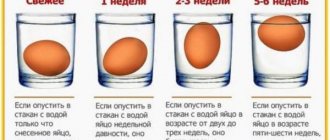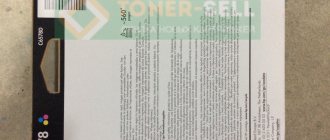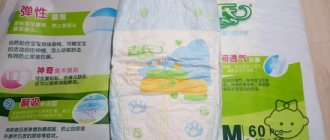Home / Complaints, courts, consumer rights / Consumer rights
Back
Published: 08/24/2018
Reading time: 6 min
0
434
After choosing a cosmetic product from a particular company, buyers pay attention to expiration dates. They are usually indicated on the packaging or bottle. Should you trust them?
- Standard expiration dates
- How to determine and check the expiration date What is a barcode
- Expiration date of cosmetics by barcode
- Expiration date of cosmetics by batch code
Guaranteed shelf life and shelf life: the difference
The expiration date (SPG) is the time interval after which the product is considered unsuitable for further use for its intended purpose (clause 1 of Article 472 of the Civil Code of the Russian Federation, hereinafter referred to as the Code).
The obligation to determine this interval is enshrined in the regulatory act. Yes, para. 2 p. 1 art. 16 of the Law “On the Quality and Safety of Food Products” dated January 2, 2000 No. 29-FZ prescribes its installation for food products, materials and products whose quality deteriorates over time, which makes them dangerous to human health and unsuitable for further consumption.
Clause 4 art. 5 of the Law “On Protection of Consumer Rights” dated 02/07/1992 No. 2300-I (hereinafter referred to as the Law on Protection of Consumer Rights) also prescribes the determination of such time periods in relation to:
- medicines;
- perfumery;
- cosmetics;
- chemicals for the care of clothes, shoes, furniture, etc.
The guaranteed shelf life is the period of time during which the manufacturer guarantees the safety of the consumer properties and characteristics of the product. This segment is determined in relation to a product that loses its properties, regardless of whether it is stored by the manufacturer, seller or buyer. This term was used in the Soviet Union (see, for example, GOST 22352-77, which has lost force in the Russian Federation).
The difference between the guaranteed shelf life and the shelf life is that a product with an expired shelf life loses its characteristic properties, but does not become dangerous and remains usable.
What is the period of use of the product
According to the Law “On the Protection of Consumer Rights”, the service life of a product or the period of use of a product is the time period during which the manufacturer is obliged to:
Free legal consultation We will answer your question in 5 minutes!
Ask a Question
Free legal consultation
We will answer your question in 5 minutes!
Ask a Question
- Provide the consumer with the opportunity to use the object for its intended purpose.
- Bear responsibility for significant defects that arose through his fault.
This is also important to know:
How does a bus ticket get refunded?
During this period, the consumer has the right:
- Demand free removal of all defects and maintenance.
- Request compensation for damage if a defect is discovered.
Only the manufacturer can determine the period of use, since it is he who is directly related to the production process.
Units
The manufacturer's liability period is established in units of time and other measurement indicators (kilometers, meters, etc., depending on the purpose).
From what moment can it be calculated
The time period of the manufacturer's obligations is calculated from the date of purchase of the object by the buyer. In cases where the day of purchase cannot be determined, the dates are set from the date of production of the product. The following cases are exceptions:
- The day of purchase does not coincide with the start date of use of the object.
- The time of concluding the contract and the moment of transfer of the goods to the consumer vary. In this case, the time period is calculated from the date of receipt of the product.
- The consumer is not able to use the item for its intended purpose due to the fault of the manufacturer or seller. The liability period is not established until all impeding factors have been eliminated.
- It is not possible to determine the exact date of delivery or installation of the product. In this case, the phase is established from the date of conclusion of the contract between the buyer and seller.
Minimum and maximum
Considering that the law does not define a mandatory warranty period, to resolve controversial issues, the buyer can use a specific GOST for any product or service, indicating the shortest and longest warranty period.
According to the law (Article 19 of the Labor Code) and examples from judicial practice, the consumer has from 14 days to 24 months to make claims regarding the quality of goods or services.
One of the durability indicators is average
Average service life is the mathematical expectation of the service period and one of the indicators of durability.
How is information communicated to the consumer?
Information about the warranty period is indicated in the technical specifications for the products, applied in the form of markings on the packaging and directly on the labels.
If the warranty period is not defined, the consumer has the right to make a claim regarding the quality of the purchased product when deficiencies are discovered within 2 years (clause 1 of Article 19 of the Law of the Russian Federation) from the date of purchase.
Warranty for certain types of goods and services
In construction (in accordance with Articles 724 and 756 of the Civil Code of the Russian Federation):
- maximum warranty period – 5 years;
- for an apartment building – 5 years;
- for an individual building – less than 3 years;
- projects – less than 2 years;
- roofing work - from 2 to 10 years.
For a residential building from the developer. According to Federal Law No. 214 of December 30, 2004, the warranty period determined by the developer in an apartment residential building is no more than 5 years from the date of signing the act of transferring the house to another person.
For services. The warranty period is provided for the result of the services, that is, for the material result. There is no guarantee for oral services.
Warranty obligations can be established with the help of the PPA or by agreement of the parties.
By car. According to the Civil Code of the Russian Federation, the period for fulfilling warranty obligations is at least 6 months.
Manufacturers determine the warranty period based on service life and mileage (domestic cars - 3 years and 50 thousand, foreign cars - from 2 to 3 years and up to 100 thousand mileage, respectively)
On clothes. Typically, the warranty period for clothing items (dress, blouse, jeans, down jacket) is 30 days from purchase.
Items can actually be exchanged or returned within 15 days, along with the day of purchase.
The warranty period established for workwear is 1 year.
For jewelry. The warranty period is set by the manufacturer, but if the warranty period is less than 2 years, the consumer still has rights in accordance with Art. 18. In addition, there must be a service life of the jewelry, when there is no information on the labels - they mean a period of 10 years.
This is also important to know:
What is a contract and what is it for?
For seasonal goods. The starting point for calculating the warranty time for seasonal products (clothing or footwear, as well as accessories) is considered to be the beginning of the corresponding season, depending on the region of the Russian Federation, taking into account the geographical location and the corresponding climate.
For furniture. The warranty period for furniture is prescribed by the manufacturer in the document for manufactured products.
For wine. Wine belongs to food products; instead of a warranty period, it has an expiration date and a storage period.
What does the warranty end certificate contain?
A document confirming the completion of warranty obligations must contain information about the object or service, the amount of warranty coverage, legal addresses, details and signatures of authorized representatives of the parties.
Differences between expiration date and warranty period
The warranty period is the time period during which the product must (Articles 469, 470 of the Code):
- comply with the quality characteristics specified in the contract (quality can be determined in another way, for example, using a sample);
- remain suitable for use for its intended purpose, if the quality characteristics are not provided for in the contract.
The differences between the expiration date and the warranty period are as follows:
- SG is determined in relation to consumable goods, warranty - to non-consumable goods.
- The expiration of the SPG of a product indicates that such a product becomes dangerous and unsuitable for further use. At the end of the warranty period, the manufacturer ceases to be responsible for any defects in the product.
- Determining the warranty period is the right of the manufacturer or seller of the goods (clauses 6, 7 of Article 5 of the Law of the Law), determination of the SG is the responsibility of the manufacturer. The sale of goods for which the SRG is not established is prohibited in cases where its definition is prescribed by a regulatory legal act (Clause 5 of Article 5 of the Law of the Law).
Thus, the concepts of warranty period and shelf life are different in their characteristics.
What is a barcode, where to find it, and what is it for?
A bar code (line code) is a specific sequence of lines that have different thicknesses. There are 13 numbers at the bottom of the lines. If the barcode is deciphered, you can get information about which country the product was produced in, at which enterprise. And also receive information regarding the personal code of the product and whether it is original or a fake. The barcode is applied to the packaging of the product, and sometimes also to the container (bottle, tube, jar) in which it is produced.
How to check the originality of a product using a barcode:
- Sum up all even numbers that are indicated in the linear product code.
- Multiply the sum of even numbers by 3.
- Sum all odd numbers of the linear code except the number 13.
- Add together the results obtained in steps 2 and 3.
- You should end up with a two-digit number, the first digit of which needs to be removed.
- From 10, subtract the number you got in step 5.
- The number that is obtained at the output must match the last digit of the barcode. If it matches, it means the product is original.
Is it possible to obtain any other information about a product from a barcode, for example, its production date and expiration date? No you can not. This data can be obtained by deciphering another marking - the batch code.
Differences between service life and GS
The service life of a product is the time interval after which durable goods, including their parts and assemblies, can:
- become dangerous to people;
- cause damage to the buyer's property;
- cause damage to the environment.
The list of goods is defined in the Decree of the Government of the Russian Federation dated June 16, 1997 No. 720. Establishing such a time period is the responsibility of the manufacturer of the goods (Clause 2 of Article 5 of the Labor Code). In case of violation of the obligation to determine the service life, the manufacturer must ensure the safety of the goods for 10 years from the date of receipt of the goods by the buyer (Clause 2 of Article 7 of the Law of the Law).
Differences between service life and warranty period:
- Determining the GS is the right of the manufacturer or seller of the product, while determining the service life is the responsibility of the manufacturer.
- The end of the service life of a product makes such a product dangerous, but the expiration of the HS does not.
- Determining the service life gives the buyer the right to demand free repair of the product only if the defects are significant (Clause 6, Article 19 of the Law of the Law), GS - free elimination of any defects or satisfaction of other requirements (Clause 1 of Article 18 of the Law of the Law). For details, see the article “Consequences of selling goods of poor quality.”
Determination of product service life according to GOST
The definition of FTA for certain types of goods is made on the basis of special regulatory and technical documentation (GOSTs and technical regulations). For example:
- GOST 33272-2015 “Safety of machinery and equipment. The procedure for establishing and extending the assigned resource, service life and storage period. Basic provisions";
- GOST 19245-93 “Children’s strollers. General technical conditions";
- GOST 16317-87 “Household electrical refrigeration appliances. General technical conditions" (as amended No. 1, 2, 3);
- GOST 20790-93 “Medical devices, apparatus and equipment. General technical conditions”, etc.
Despite the fact that each of the relevant technical documents provides a definition of the term SST, taking into account the specifics of the production and use of a particular type of product, in general its content is reduced to that enshrined in the law “On ZPP”.
What is the difference between quality assurance and GS?
We explained in one of the previous sections how the warranty period differs from the expiration date. Now let’s look at the differences between quality assurance and warranty period. “Guarantee of product quality” - this is the name of Art. 470 Code.
The product sold to the buyer must be of the quality specified in the contract, or be suitable for use for its intended purpose. In cases where the manufacturer or seller guarantees the preservation of the quality of the goods sold for a certain time, we are talking about a guarantee of quality and GS.
Thus, the warranty period is the time period for which the manufacturer of the product or its seller provides a guarantee of the quality of the product.
How to decipher the manufacturer's batch code if it is not on the website
If you bought cosmetics from an unknown or very small brand and it is not in the list of manufacturers on sites with online calculators, you can find out the expiration date of the product directly from the manufacturer. To do this you can:
- Call the phone number indicated on the package for feedback.
- Write to the manufacturer by email.
- If the company's contact information is not indicated on the package, you can find them on the Internet.
It is most likely that the company will answer your question regarding the shelf life of the product, since manufacturers, as a rule, try to meet their customers halfway.
Establishment rules
The responsibility for assigning deadlines for the types described rests with the manufacturer. The following points should be taken into account:
- suitability applies to food products and some other types of products;
- service time is determined for durable goods;
- storage refers to both.
For example, suppliers of sausages and winter shoes must indicate in the technical documentation how long the product will retain its consumer characteristics. But the essence of such work differs. Sausage must be stored under certain conditions: in the refrigerator, with the casing intact. And boots can be stored in a warehouse. But the manufacturer is obliged to use such materials so that the shoes do not become unusable before the date of potential sale.
Suppliers indicate on the packaging container each of the described deadlines, if any are established by law.
Ensuring consumer rights
The legislation allows citizens to make claims for poor-quality goods. It can be addressed:
- manufacturer;
- supplier;
- importer;
- to the implementer.
The legislation provides the following standards for filing a claim:
- during the warranty period;
- before the expiration date indicated on the container;
- within two years from the date of purchase if the warranty is less than this period.
Hint: the countdown starts from the day of purchase. If it is impossible to determine this, then from the date of manufacture.
How to make a claim
A dissatisfied customer can return the product to the store. But this should be done in compliance with all formalities. They are:
- The claim is drawn up in two copies. One is handed over to the seller, on the second the latter puts a mark of acceptance:
- date;
- job title;
- surname and initials;
- signature.
- A purchase receipt is attached to the application. If there is none, then testimony of witnesses is needed.
- Unusable products are returned to the store in the same form in which they were purchased:
- with packaging containers;
- with complete factory seals;
- fully equipped.
- If the seller refuses to accept the application, it can be sent by mail with acknowledgment of receipt.
Obligation of the supplier of unsuitable products:
- carry out quality checks;
- eliminate the defect at your own expense, if possible;
- return funds to the person;
- exchange the product for a new one of appropriate quality;
- compensate for the costs of repairs if they were done by the buyer.
For information: goods that have expired are accepted at retail outlets without problems. Sellers make claims against them to suppliers, and the latter – to manufacturers. Losses are borne only by the manufacturer.
Additional features
The legislator took into account some features of modern trade turnover. They are useful for consumers to know. After all, products are now purchased online. And this leads to a discrepancy between the dates of concluding the purchase and sale agreement and the start of operation of the devices. In accordance with paragraph 2 of Article 19 of this law, the period is counted in this situation from the moment the citizen receives the product.
This is also important to know:
Family characteristics: recommendations for compilation, structure, how to collect information
The same rule applies in the situation of purchasing a product that requires assembly or installation. The guarantee begins from the moment the item is in the person's complete possession. In this case, the latter has the right to make a claim not only to quality, but also to packaging and completeness.
Separately, the legislator indicated the priority of the parties’ agreement. Thus, counterparties can draw up an agreement on calculating the guarantee on their own terms. This must be done in writing in two copies. The parties, subject to their obligations, rely in their relationships on the norms of the contract, not the law.
The expansion of consumer rights is rightly limited by responsibilities. These include collecting evidence of the validity of a claim regarding product quality, if it was received by the manufacturer, two years after the start of use.










